Abstract
The key pecks of four pigeons were reinforced on a variable-interval 5-min schedule which operated in each of the four components of a multiple schedule, indicated by red, green, yellow, and blue stimuli and presented in such an order that the red stimulus always preceded the yellow and the green stimulus always preceded the blue. After establishing baseline rates, the reinforcement schedule associated with the blue and yellow components was altered so that one was now an extinction schedule and the other was a variable-interval 1-min schedule. In a second experimental stage, the blue stimulus was interchanged with the yellow so that the red stimulus preceded the blue and the green stimulus preceded the yellow. In both experimental stages the response rate in the variable-interval 5-min component that preceded the extinction component was higher than the response rate in the variable-interval 5-min component that preceded the variable-interval 1-min component. The results were discussed in relation to the importance of stimulus ordering in experiments concerned with investigating behavioral contrast.
Full text
PDF
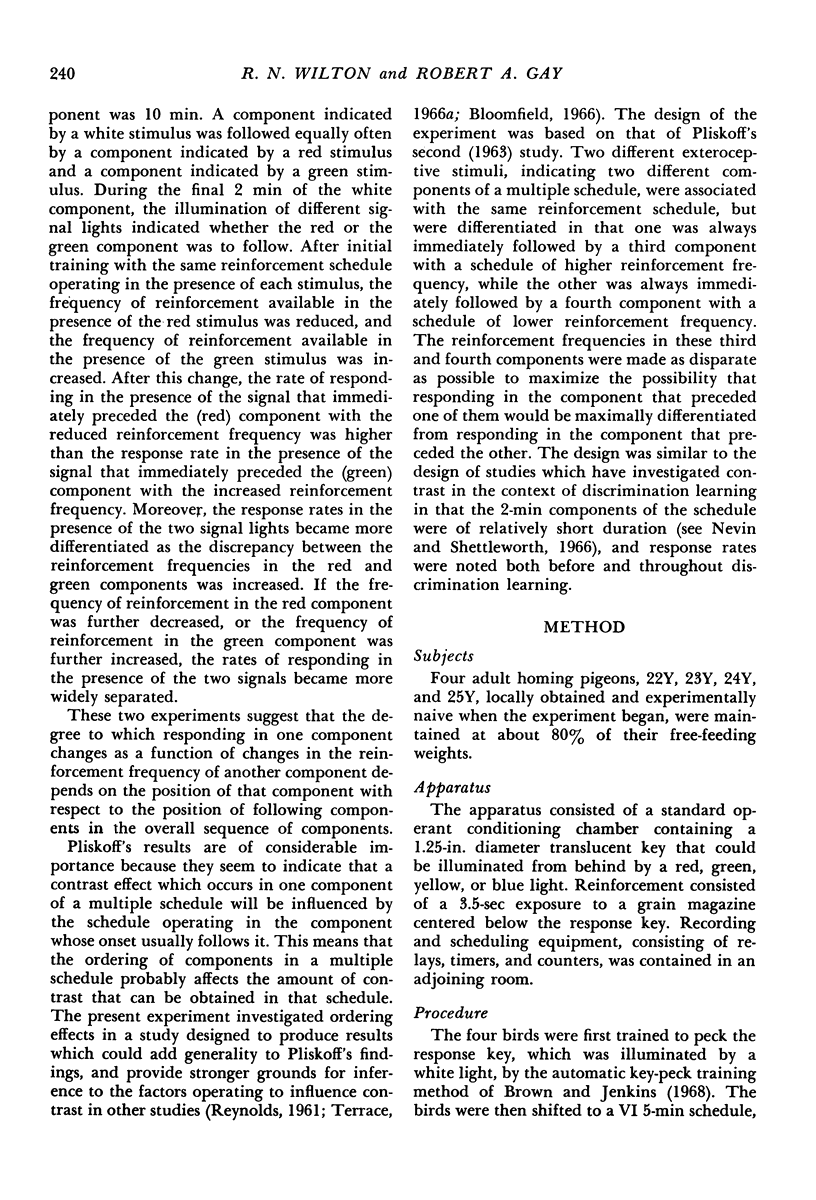
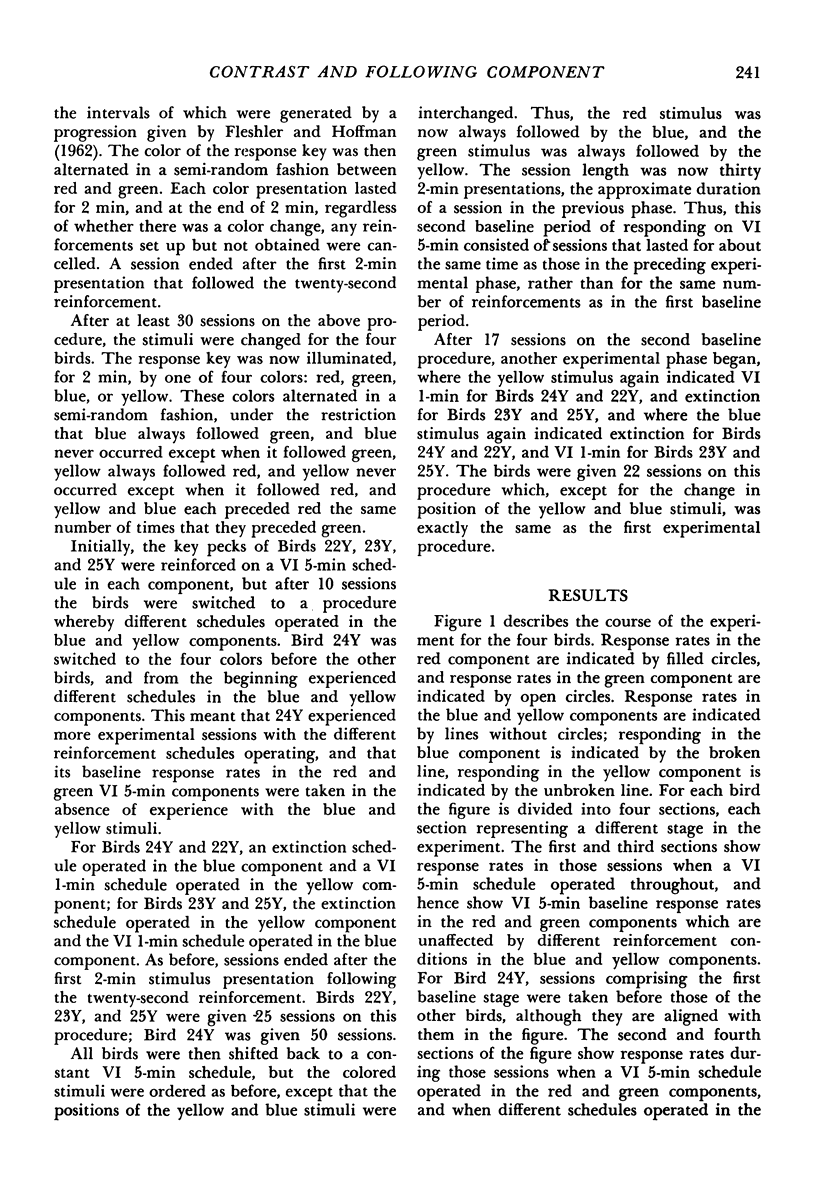
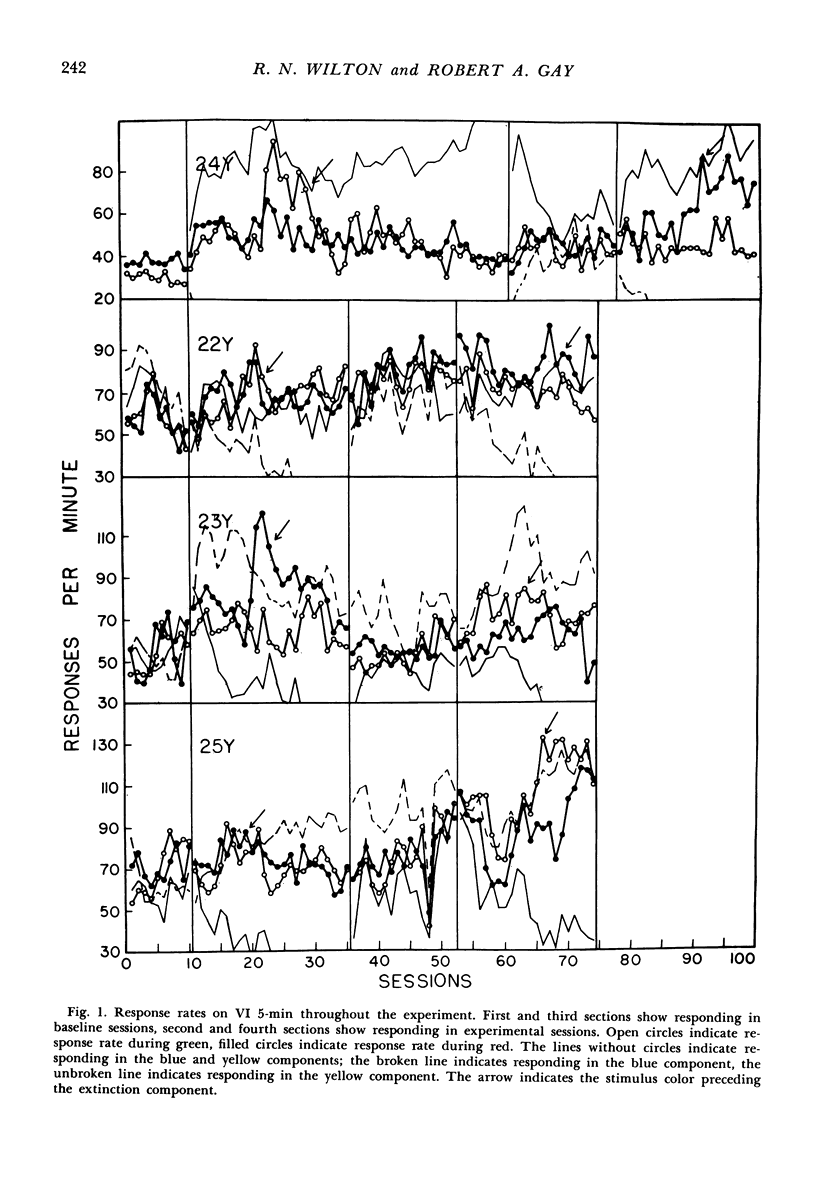

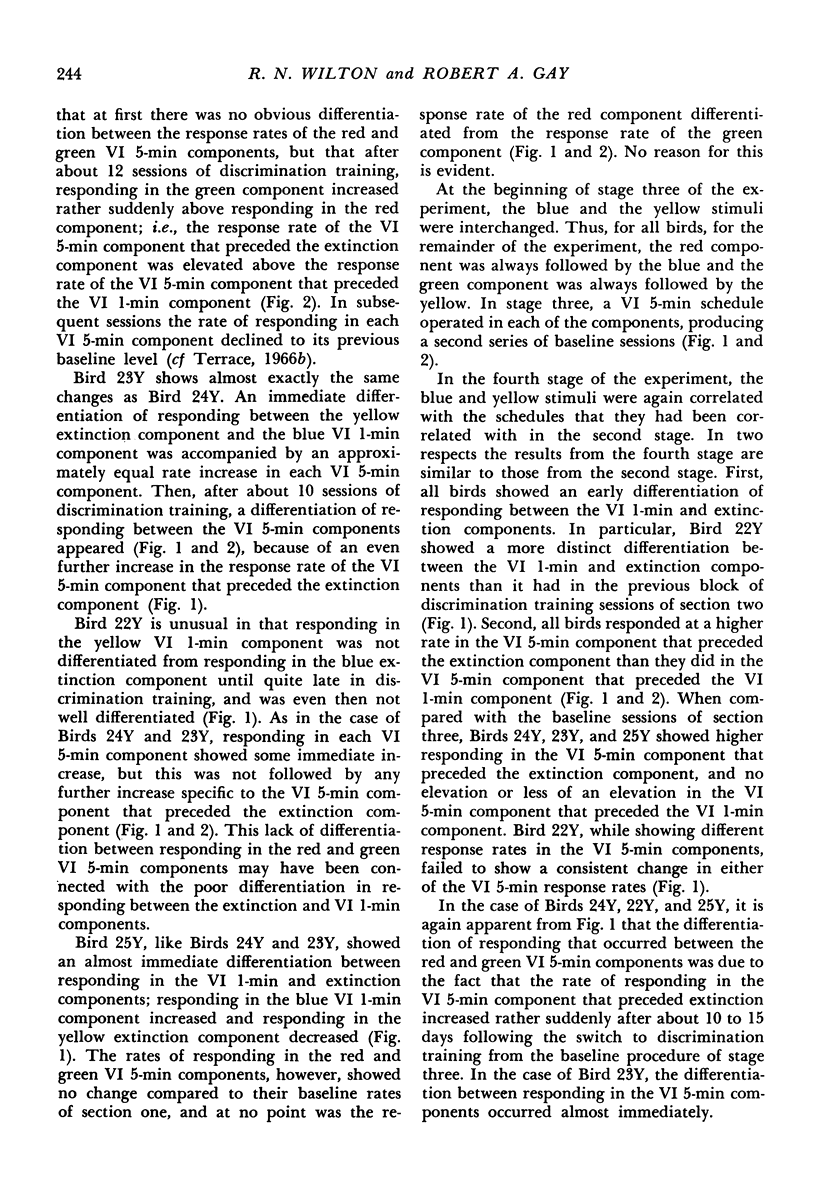

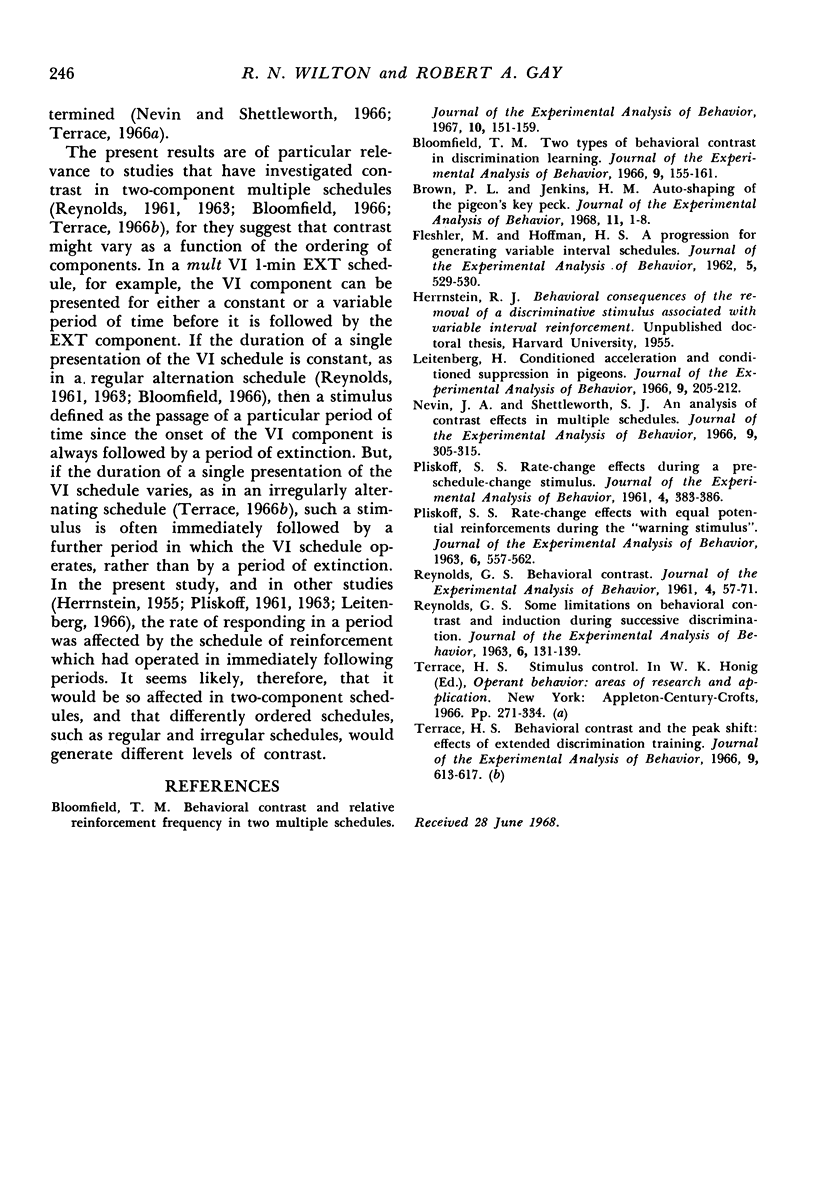
Selected References
These references are in PubMed. This may not be the complete list of references from this article.
- Bloomfield T. M. Behavioral contrast and relative reinforcement frequency in two multiple schedules. J Exp Anal Behav. 1967 Mar;10(2):151–158. doi: 10.1901/jeab.1967.10-151. [DOI] [PMC free article] [PubMed] [Google Scholar]
- Bloomfield T. M. Two types of behavioral contrast in discrimination learning. J Exp Anal Behav. 1966 Mar;9(2):155–161. doi: 10.1901/jeab.1966.9-155. [DOI] [PMC free article] [PubMed] [Google Scholar]
- Brown P. L., Jenkins H. M. Auto-shaping of the pigeon's key-peck. J Exp Anal Behav. 1968 Jan;11(1):1–8. doi: 10.1901/jeab.1968.11-1. [DOI] [PMC free article] [PubMed] [Google Scholar]
- FLESHLER M., HOFFMAN H. S. A progression for generating variable-interval schedules. J Exp Anal Behav. 1962 Oct;5:529–530. doi: 10.1901/jeab.1962.5-529. [DOI] [PMC free article] [PubMed] [Google Scholar]
- Leitenberg H. Conditioned acceleration and conditioned suppression in pigeons. J Exp Anal Behav. 1966 May;9(3):205–212. doi: 10.1901/jeab.1966.9-205. [DOI] [PMC free article] [PubMed] [Google Scholar]
- Nevin J. A., Shettleworth S. J. An analysis of contrast effects in multiple schedules. J Exp Anal Behav. 1966 Jul;9(4):305–315. doi: 10.1901/jeab.1966.9-305. [DOI] [PMC free article] [PubMed] [Google Scholar]
- PLISKOFF S. S. RATE-CHANGE EFFECTS WITH EQUAL POTENTIAL REINFORCEMENTS DURING THE "WARNING" STIMULUS. J Exp Anal Behav. 1963 Oct;6:557–562. doi: 10.1901/jeab.1963.6-557. [DOI] [PMC free article] [PubMed] [Google Scholar]
- PLISKOFF S. Rate-change effects during a pre-schedule-change stimulus. J Exp Anal Behav. 1961 Oct;4:383–386. doi: 10.1901/jeab.1961.4-383. [DOI] [PMC free article] [PubMed] [Google Scholar]
- REYNOLDS G. S. Behavioral contrast. J Exp Anal Behav. 1961 Jan;4:57–71. doi: 10.1901/jeab.1961.4-57. [DOI] [PMC free article] [PubMed] [Google Scholar]
- REYNOLDS G. S. Some limitations on behavioral contrast and induction during successive discrimination. J Exp Anal Behav. 1963 Jan;6:131–139. doi: 10.1901/jeab.1963.6-131. [DOI] [PMC free article] [PubMed] [Google Scholar]
- Terrace H. S. Behavioral contrast and the peak shift: effects of extended discrimination training. J Exp Anal Behav. 1966 Nov;9(6):613–617. doi: 10.1901/jeab.1966.9-613. [DOI] [PMC free article] [PubMed] [Google Scholar]


